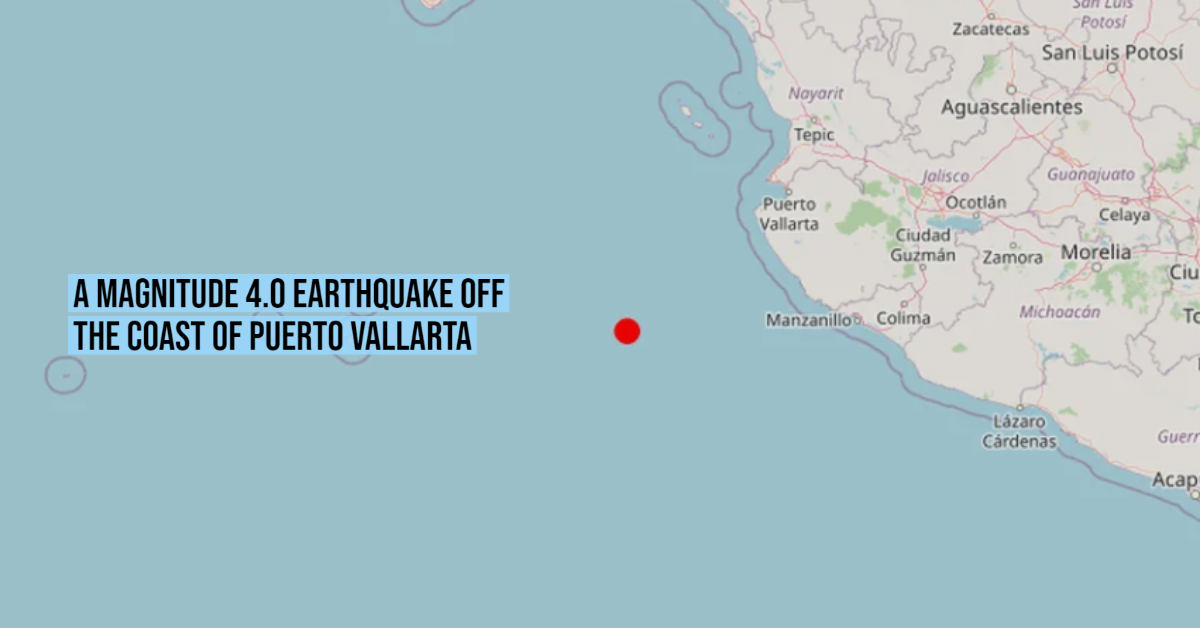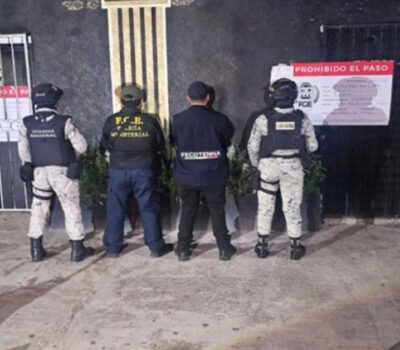An earthquake of magnitude 4.0 and with a depth of 5 kilometers was recorded off the coast of Puerto Vallarta at 2:53 local time (7:53 UTC) today.
The epicenter of the episode was 290 km southwest of that town in the state of Jalisco, according to preliminary information from the National Seismological Service (SSN).
In the face of significant seismic activity, the National Center for Disaster Prevention (Cenapred) calls not to fall for rumors or false news and only get information from official sources, such as the Civil Protection authorities, both local and state, as well as federals.
After an earthquake, check your home for possible damage, use your cell phone only in emergencies, do not light matches or candles until you are sure there are no gas leaks, and remember that aftershocks may occur, so it is important to keep alert.
You can also take the following steps before an earthquake: prepare a civil protection plan, organize evacuation drills, find safety zones at home, school or workplace, and pack an emergency backpack.
During an earthquake, remain calm and locate yourself in a safe place, stay away from objects that could fall; if you are in a vehicle, park and move away from buildings, trees, and poles; and if you find yourself on the coast, stay away from the beach and take refuge in high areas.
Mexico stands out as one of the countries with the most seismic activity. In recent memory, the events of 1985 and 2017 are remembered above all, movements that caused devastation in Mexico. Despite being the most remembered, they were not the largest since modern times.
On March 28, 1787, the strongest earthquake recorded in the country occurred. Oaxaca, then the central point of the Spanish colony, was the victim of a movement of 8.6. That event was so impetuous that it was followed by a tsunami that reached 6 kilometers inland.
According to a study by the Center for Instrumentation and Seismic Recording (Cires) carried out in 2009 on the earthquake of March 28, 1787, large earthquakes with magnitudes of 8.6 or greater could occur in the coming years. These will have as their epicenter the coasts of Mexico and Central America, as they are located in the Guerrero Gap, which accumulates a large amount of energy.
However, a lower magnitude in a seismic event does not necessarily translate into a lower impact on buildings and infrastructure. Thus, in 1985 and 2017, the inhabitants of the capital, Mexico City, had to face the devastation caused by two earthquakes that became a watershed in their lives.
The one in 1985, occurred on September 19 of that year at 7:19 local time (13:19 UTC), with an epicenter in the state of Guerrero and a magnitude of 8.2. Since then, it was believed that nothing like it would be repeated, but, coincidentally, it happened again exactly 32 years later on the same date.
In 2017, it happened at 13:14 local time (18:30 UTC), with its epicenter in an area between the states of Puebla and Morelos. Then, the death toll reached 369.
An earthquake of magnitude 4.0 and with a depth of 5 kilometers was recorded off the coast of Puerto Vallarta at 2:53 . . .












